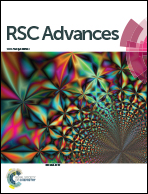Biomass to fuel gas conversion through a low pyrolysis temperature induced by gamma radiation: an experimental and simulative study
Abstract
Currently, 80% of global energy is supplied by carbon-based fossil fuels, which has led to concerns over the environmental impact of increasing atmospheric CO2 levels and has sparked ever-growing interest in renewable energy sources. The aim of this study is in line with adding value to low or negative valued biomass feedstocks by converting them into marketable bio-fuel gases, to replace the current one, as a renewable resource for energy via the pyrolysis technology. As a promising thermal conversion method in terms of high reliability, good flexibility through processing and production of versatile range of products pyrolysis is considered to be an important process for the generation of sustainable energy and chemicals from biomass. The pyrolysis process converts biomass carbon-containing materials into a combustible gas, which is primarily composed of carbon monoxide, hydrogen, and methane. However, the literature available over the last few decades have reported that the pyrolysis process should be carried out at elevated temperatures, which is at least 500 °C. The current study is focused on the conversion of some biomass into certain fuel gases at low operational temperatures assisted by γ radiation. First, using raw untreated biomass, gas mixtures composed of different percentages of carbon dioxide and methane were obtained under different operating conditions of time and temperature. In practical, the maximum temperature and time of 300 °C and four hours, respectively, were applied through this conversion process. A complete shift in the produced gas composition towards pure methane (natural gas) was obtained under the same operating conditions via the introduction of gamma ray-treated biomass samples in the pyrolysis system. On the other hand, nano-carbon black particles were obtained as the by-product of the thermal conversion of the irradiated biomass, whereas amorphous structured carbon was obtained when untreated biomass was applied. The gas composition analysis was conducted using a GC instrument equipped with a TC detector and carbon particle characterization was carried out using both HR TEM and Raman spectroscopy.


 Please wait while we load your content...
Please wait while we load your content...